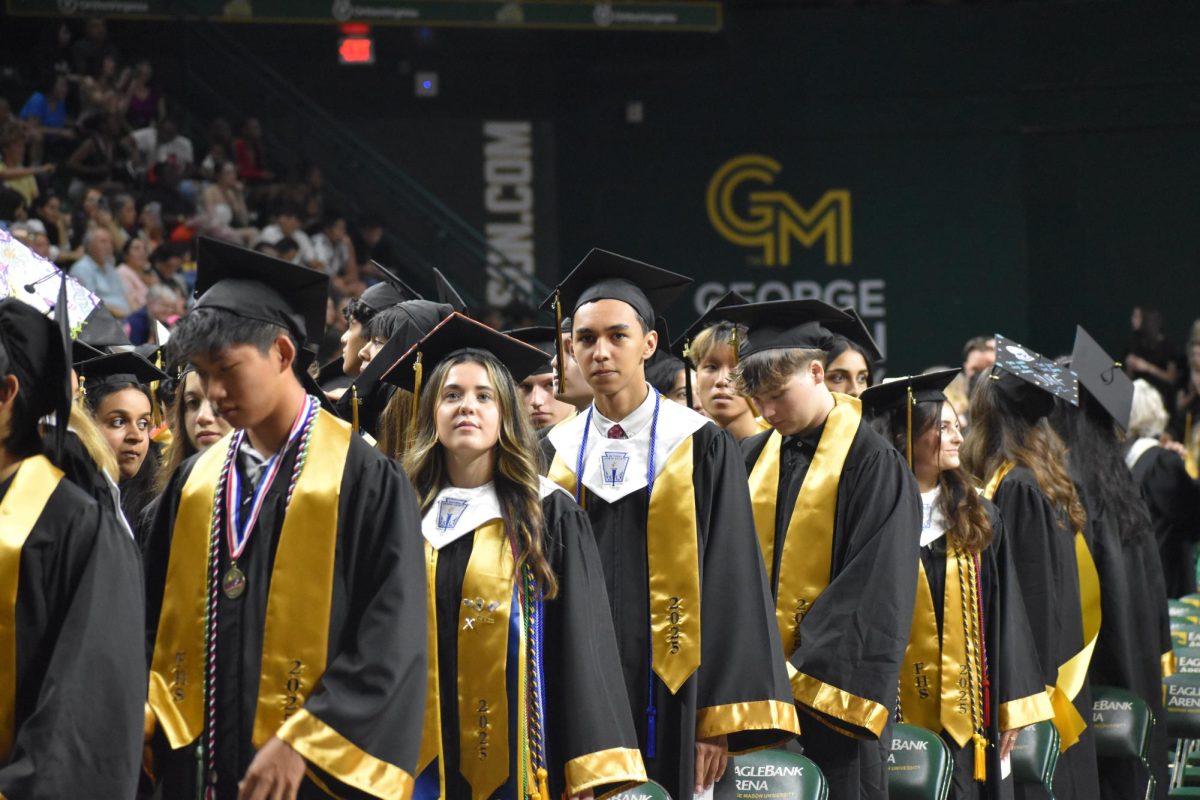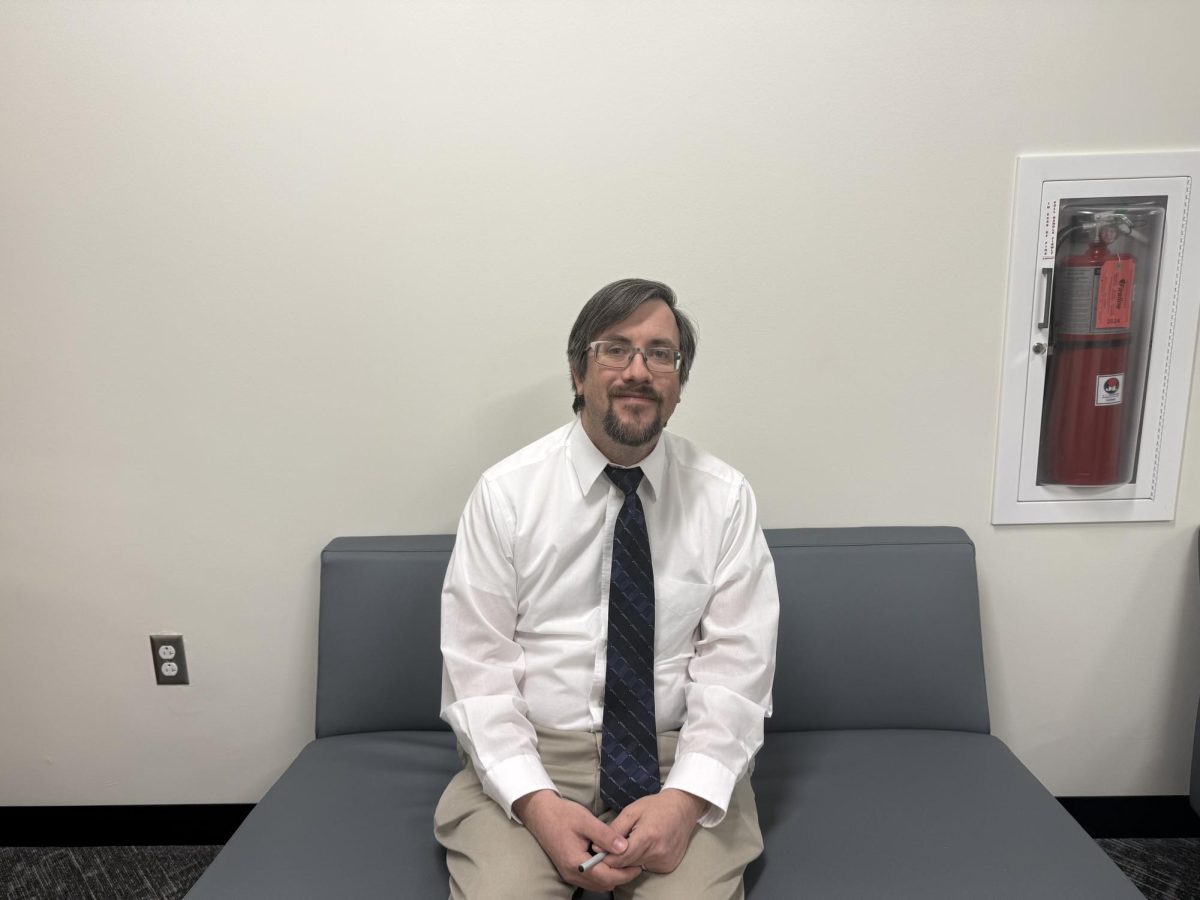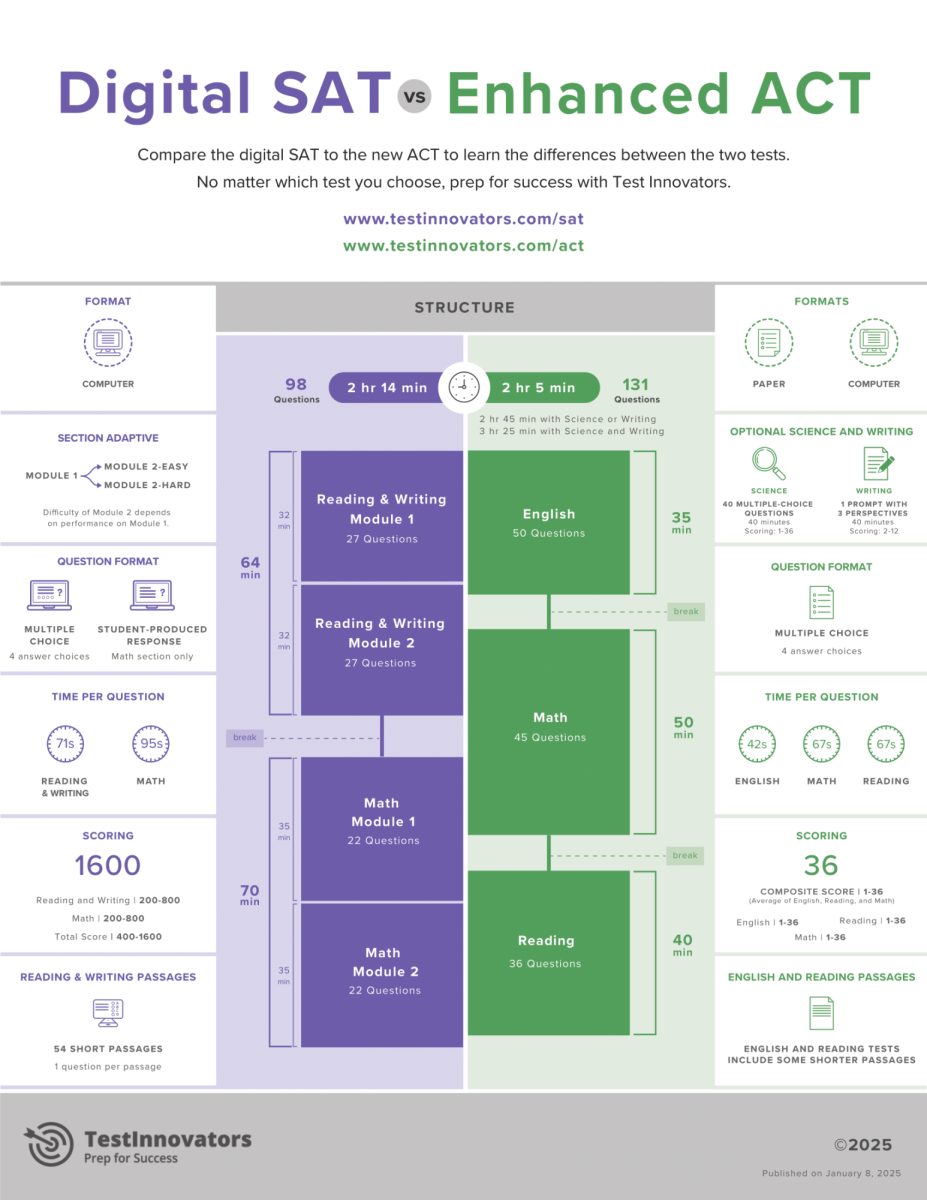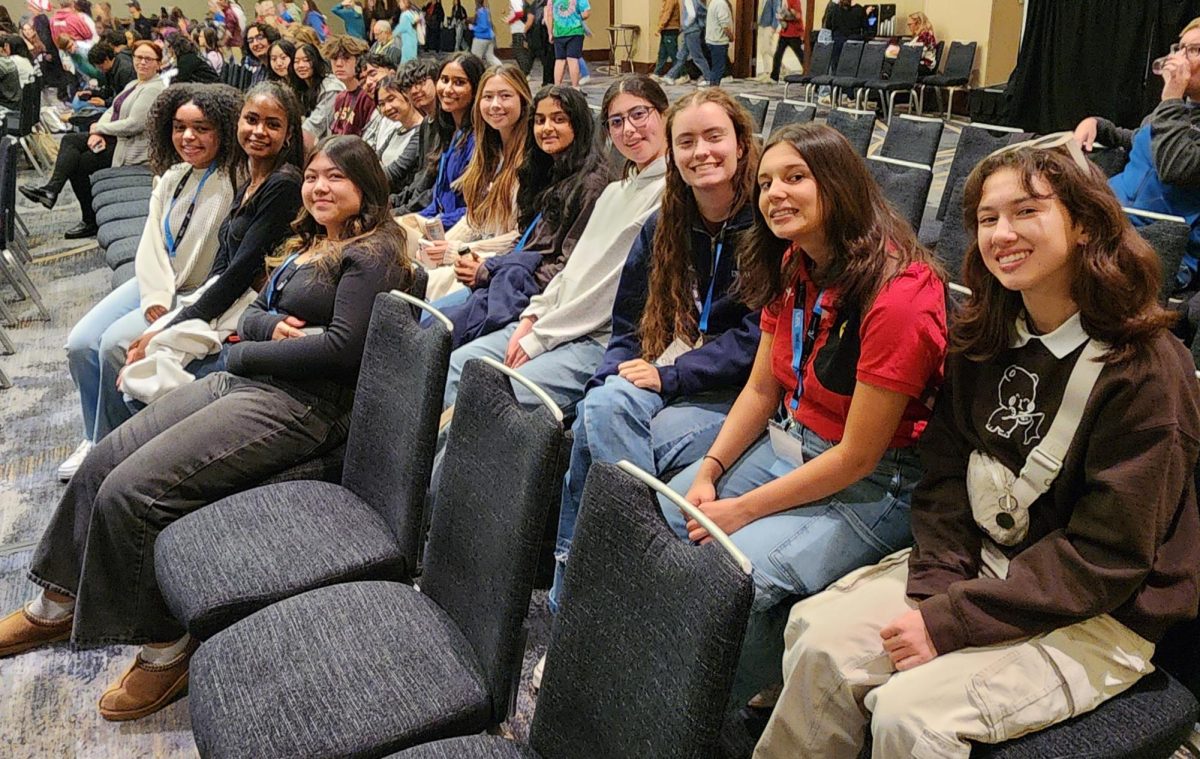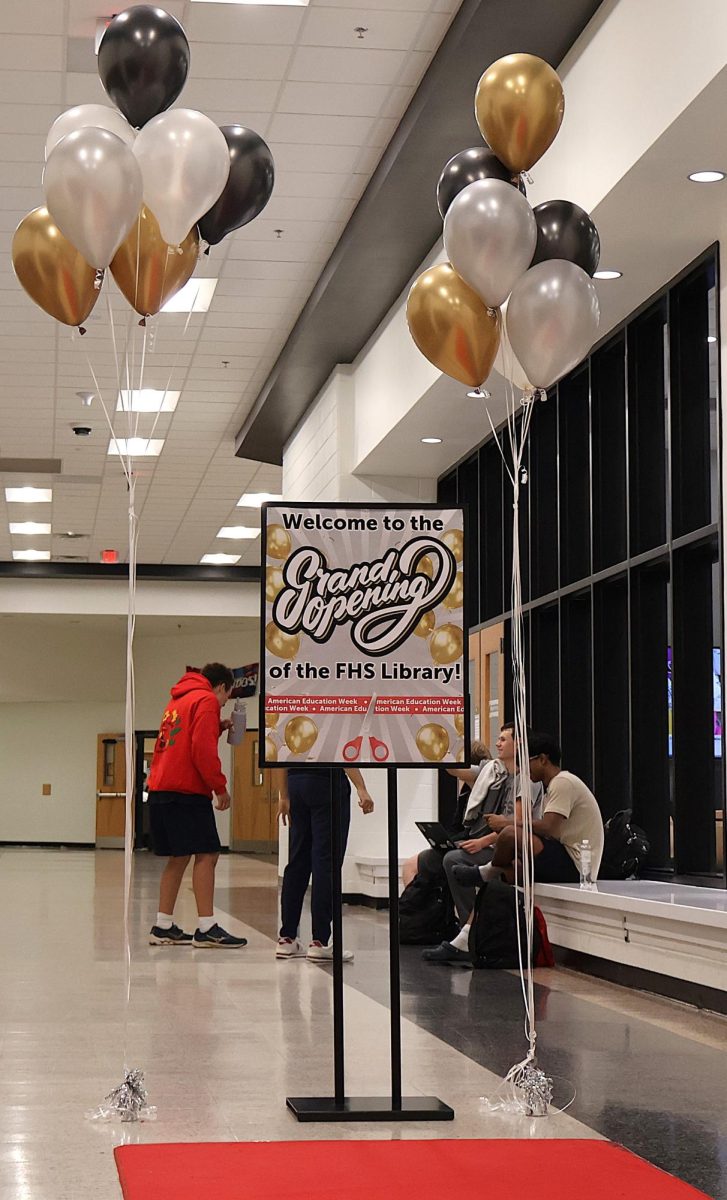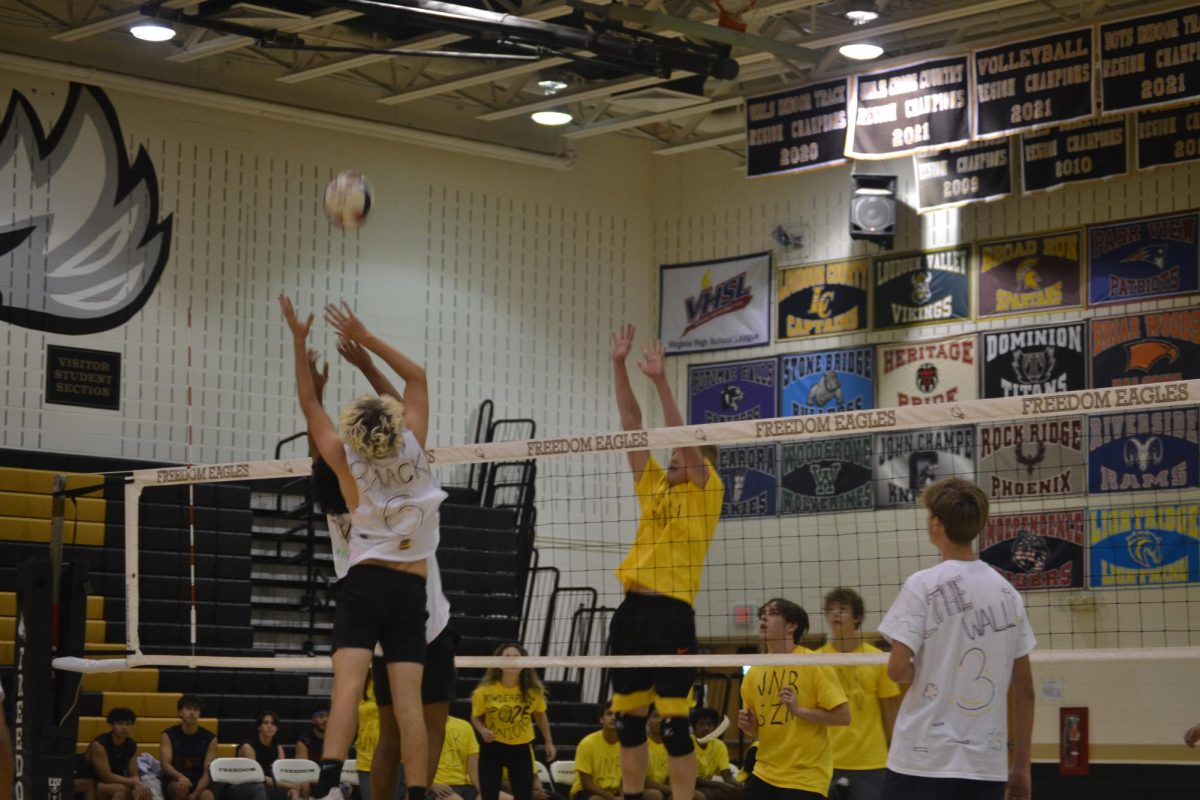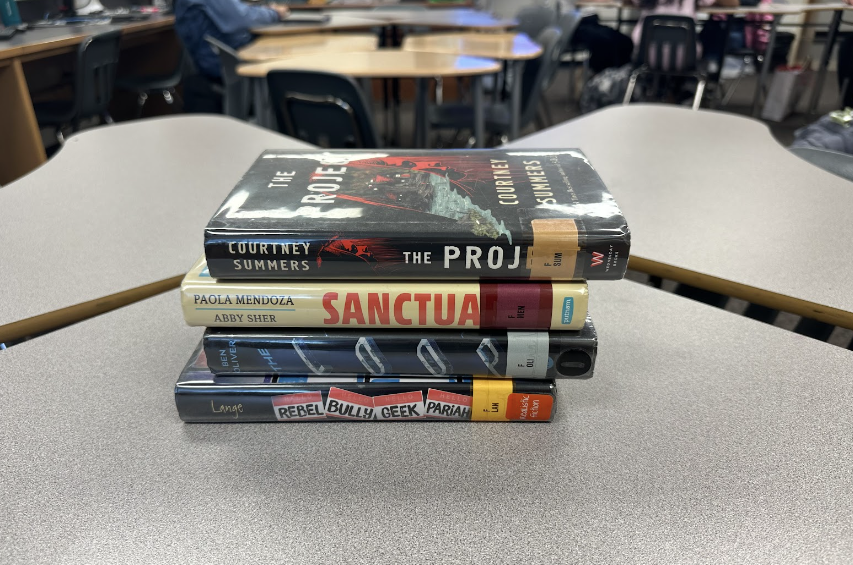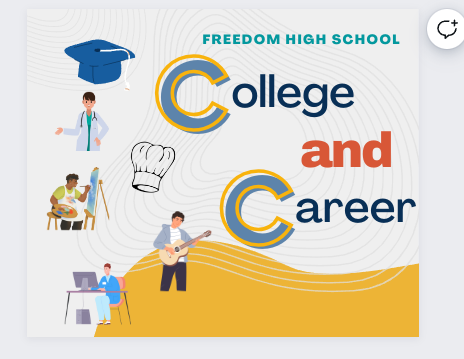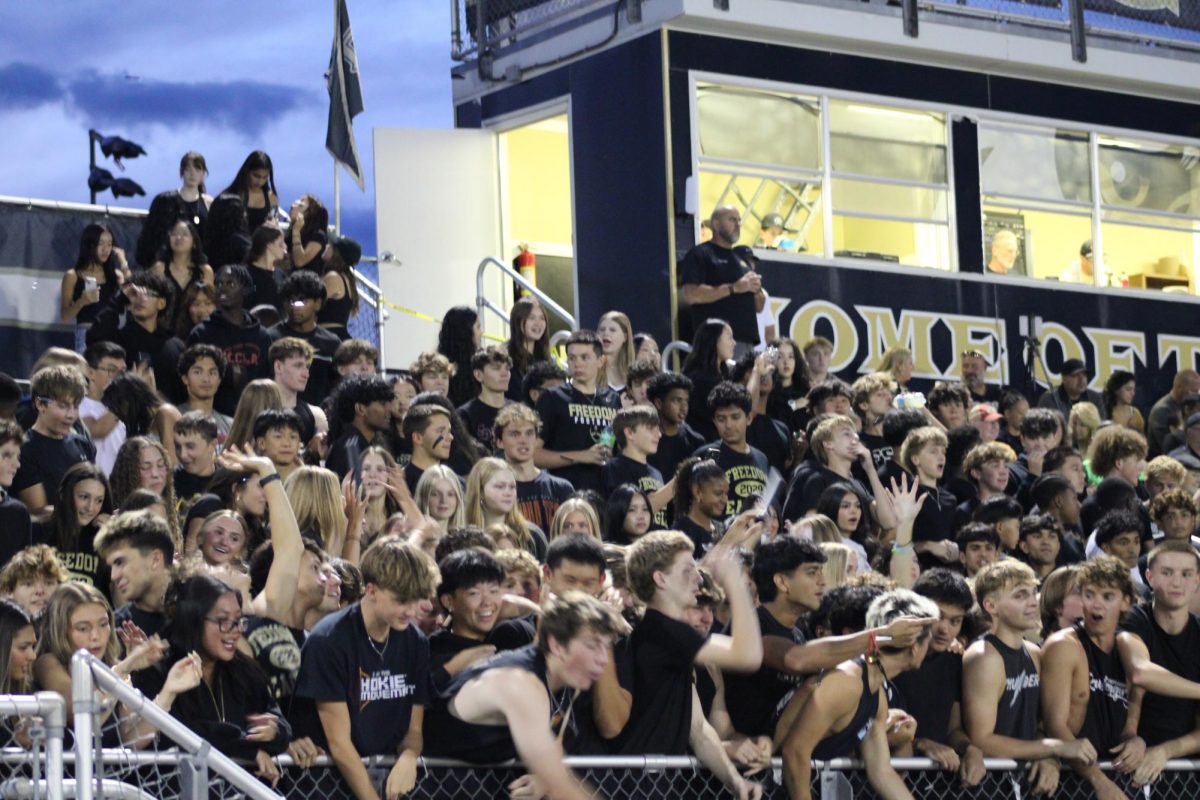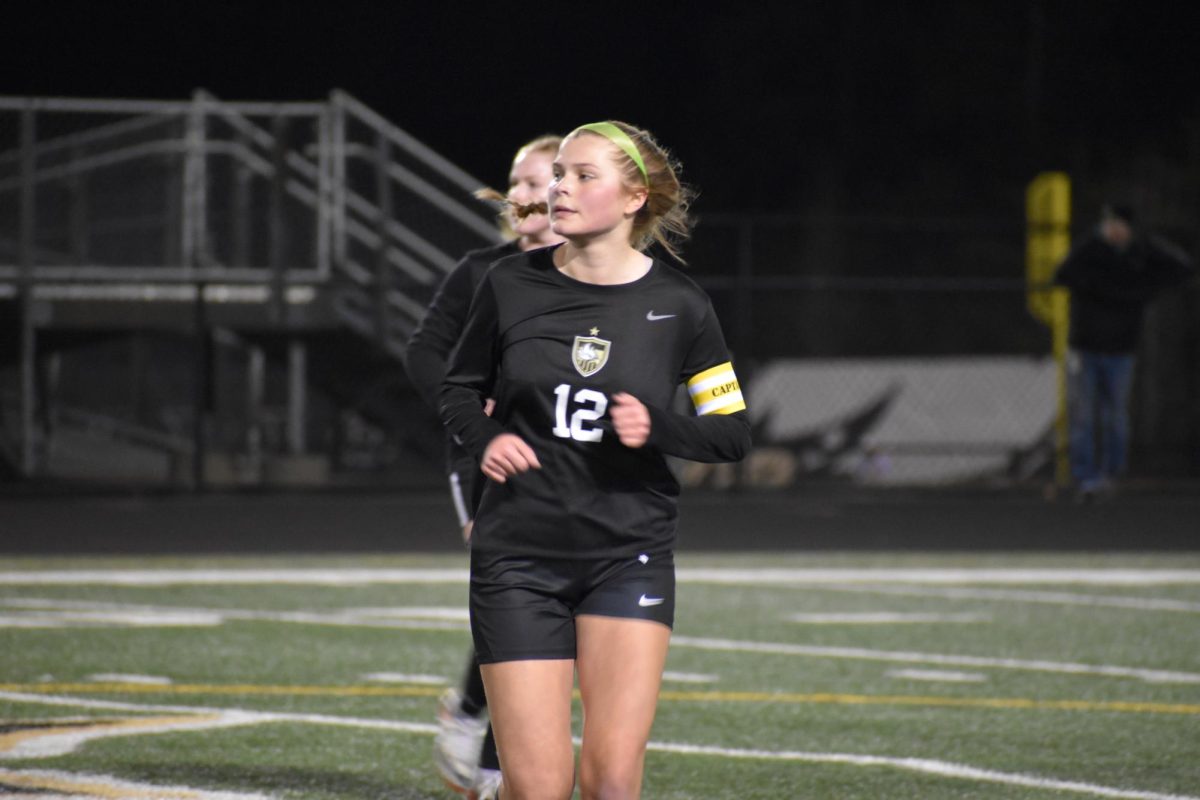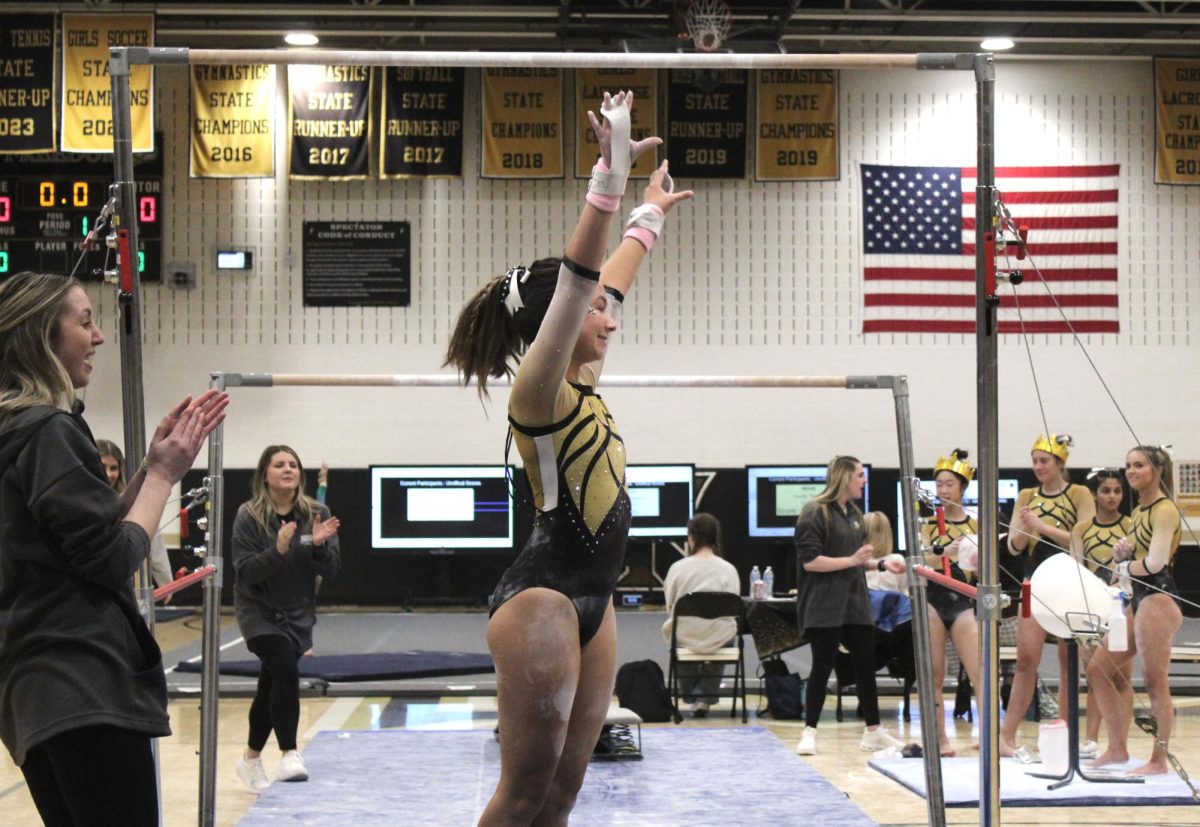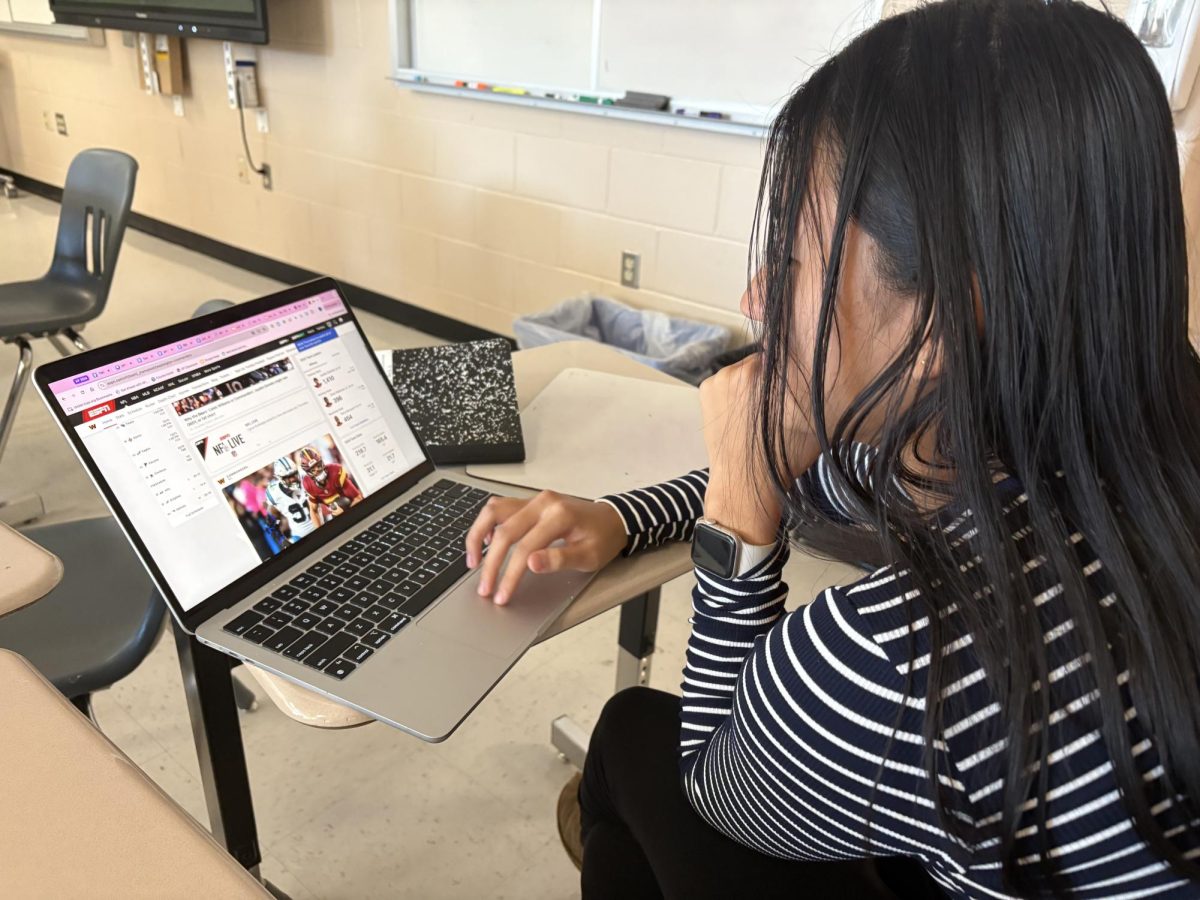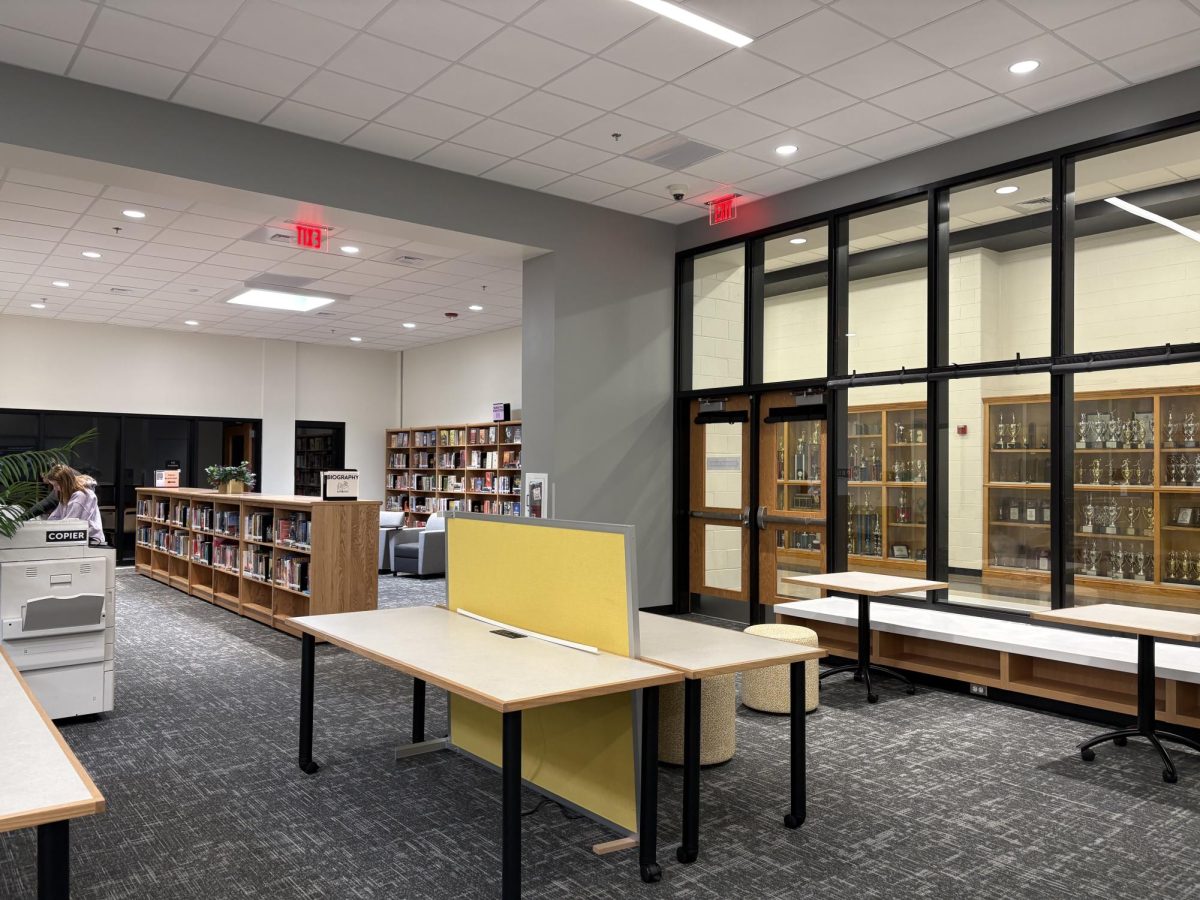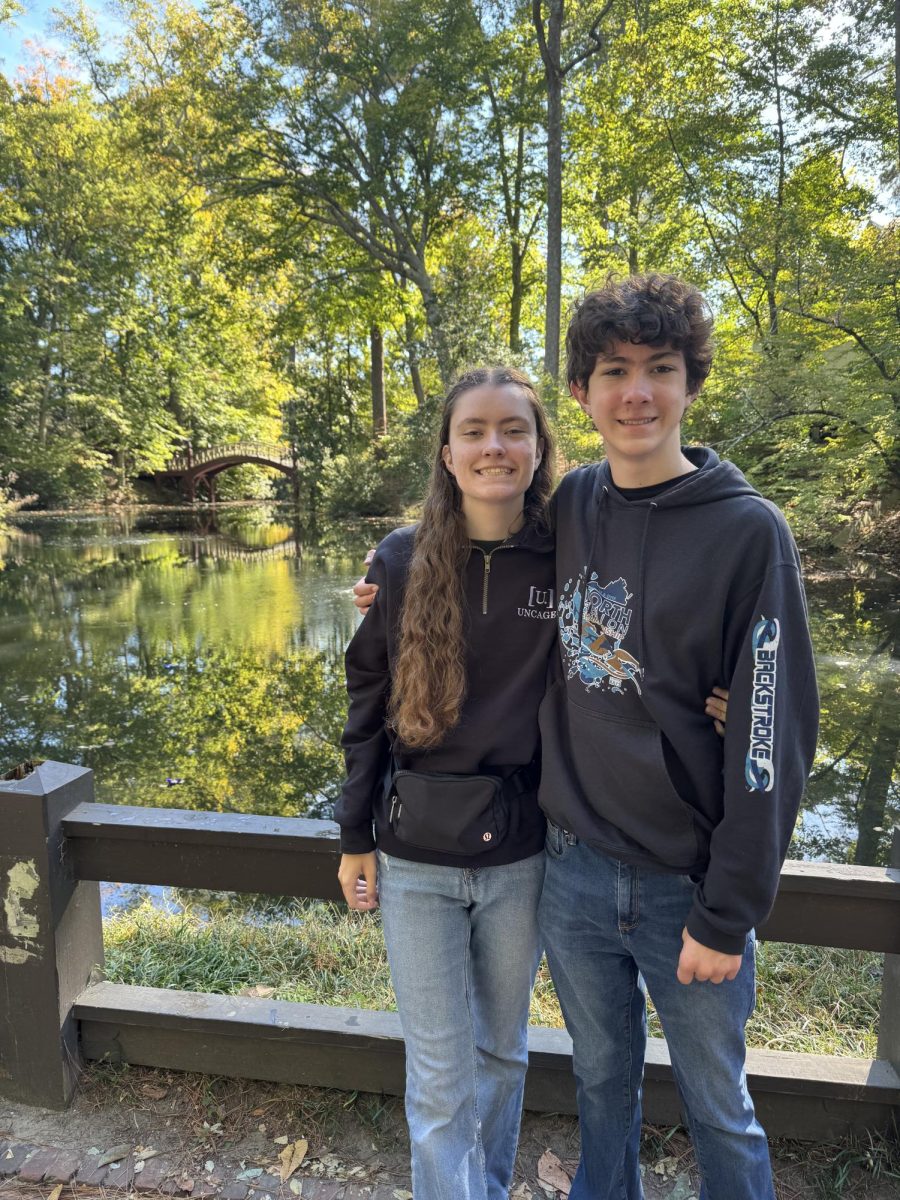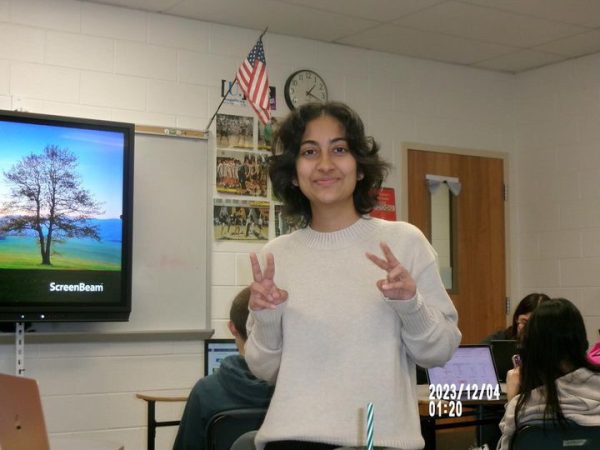In August 2005, Freedom High School welcomed its first group of students for the 2005-2006 school year. FHS has changed physically, systematically and culturally twenty years later, but it still maintains many aspects of its identity that makes it unique.
“When [Freedom] first opened up, we had about 400 students and about 44 adults. We only used the top floor,” said Principal Neelum Chaudhry. “It wasn’t until the second semester that math moved downstairs, but all the other places in the lower level were not until the next year.”
During the first school year, students had the option of attending FHS or continuing to attend Broad Run High School in Ashburn. Many current high school students chose to stay at Broad Run, with no seniors attending FHS during the 2005-2006 school year. Due to the small class size, there were only three counselors and less than 50 teachers and staff.
“The programs that Freedom has in place now compared to when we first opened is night and day,” said Kenneth Christopher, Director of School Counseling. “We have a full time Academic Support Center and Campus has grown. When I was a counselor, I was the club sponsor of PEER, so it wasn’t even a class; it turned into a class in 2007. The ambassadors weren’t around either. So there’s so many programs and resources that are now available to students; it’s so much better.”
FHS has changed physically as well. When the school was built, it was supposed to accommodate around 1,700-1,800 students. However, in the 2015-2016 school year, FHS’ population was around 2,100 students, causing the building to be overcrowded. As a result, FHS built the Eagle Wing, adding nine additional classrooms, while also adding the learning cottages outside. The school also removed many lockers in the hallways in the 2017-2018 school year to create additional space. In 2024, FHS flipped the locations of the library and main office for security reasons, altering their layouts to add new features such as the enclosed classroom in the library and an extra counseling office.
“I think it still looks like a relatively new school, especially when I visit other schools,” Christopher said. “Custodians do a good job keeping it clean and all that nice stuff.”
In 2005, the school was not as diverse, but as the years have progressed, the student body and teaching population has grown to represent a range of ethnicities, religions and socioeconomic groups. Many student affinity groups have been created throughout the years as well, with their goals focused on celebrating and teaching their cultures.
“I think that with every passing year, we become better and better at accepting people and celebrating our diversity in terms of not just ethnicity, but even religion and socioeconomic groups,” Chaudhry said. “There are lots of different socioeconomic groups in this school, but it’s not really obvious or evident because people are treated well.”
During FHS’ earlier years, the teaching staff was less diverse, but the administration has hired more teachers and staff from a variety of backgrounds, helping make the adult population more diverse and representative. Teaching standards and practices have also shifted, with a collaborative environment developing as the school progressed. Earlier, teachers would focus on their own curriculum, but, starting with the English department, more teachers began focusing on sharing their assignments and lessons with other teachers in their respective subjects.
“[Teachers] have gone from this very individualized culture to this more collaborative mindset, and that has benefited us teachers and it has benefited students,” said Susan Nigro, English teacher. “This environment is a lot less stressful on the teachers, especially new teachers coming in.”
Despite these vast changes, many aspects of FHS have remained the same. One notable aspect about FHS is the student body, with many consistently describing students as kind and welcoming. Despite the various interests and cultural differences in the student body, people tend to be kind.
“I think that our community is very welcoming, and I think that our students are not only caring but also very forgiving,” Chaudhry said. “When we tend to have an issue, we recognize it, we work on it and everyone comes back together. So, I feel like the students in the school don’t linger on and don’t hold on to old grudges.”
As FHS continues to grow, current staff have future goals that they would like to implement in the future to continue creating a positive community.
“I’d like to do an event where we invite [alumni] back for a social event, even if it’s just a reception,” Chaudhry said.
